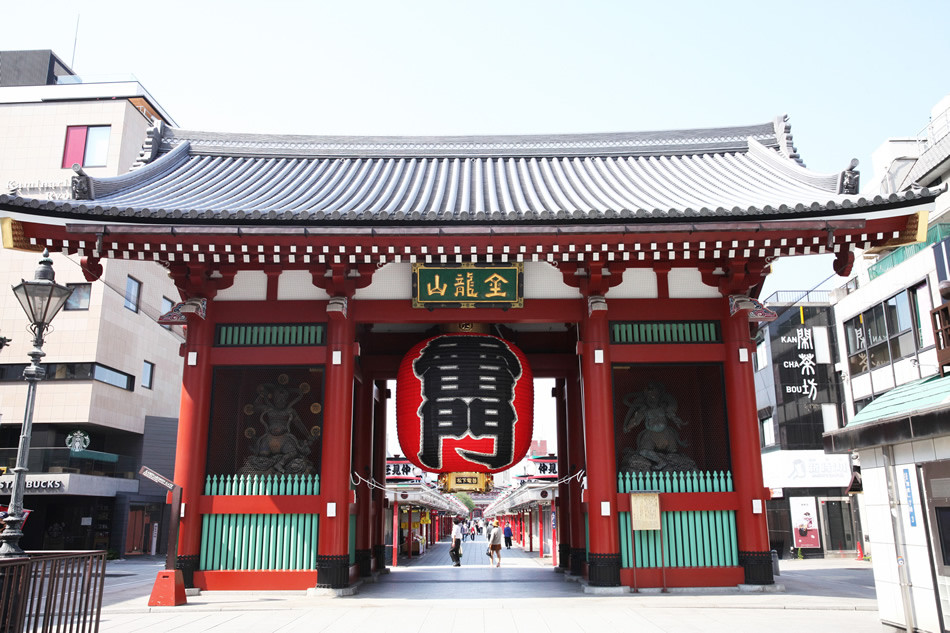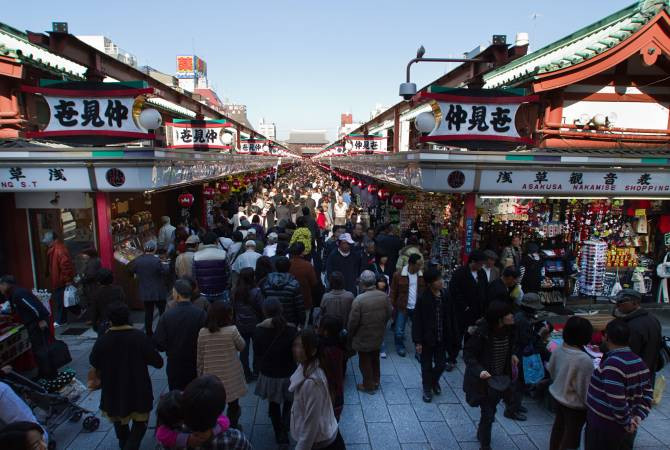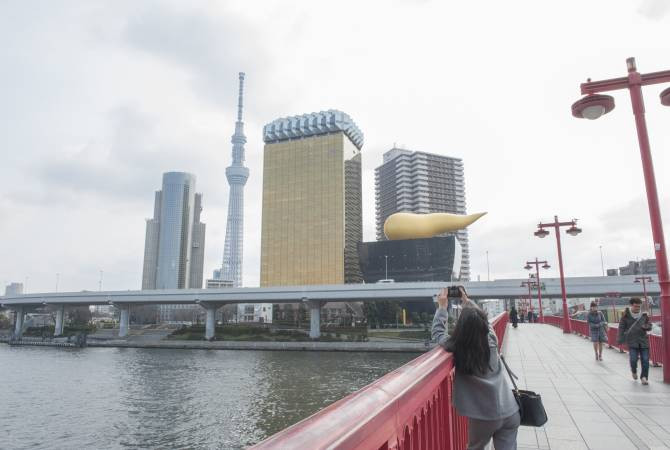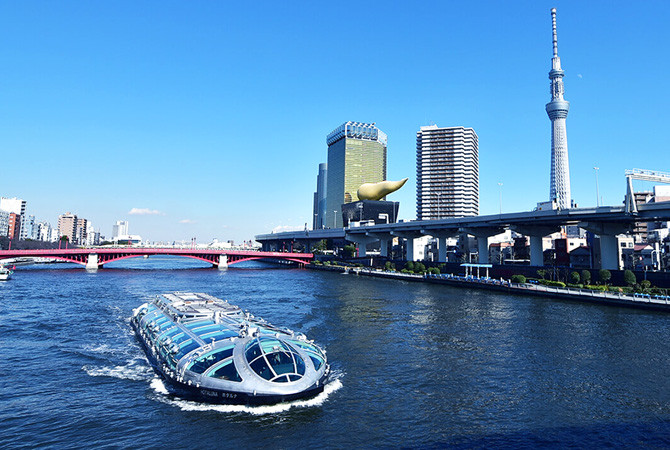Are you dreaming of an authentic Japanese experience during your Tokyo visit? Asakusa Tourism offers a rich blend of tradition and modernity, making it a must-see destination. With SIXT.VN, you can effortlessly plan your Asakusa adventure, enjoying convenient transportation, comfortable accommodations, and memorable cultural experiences. Let us help you explore the heart of Tokyo’s historical charm with seamless travel arrangements.
1. What is Asakusa and Why Should It Be on Your Tokyo Itinerary?
Asakusa is a vibrant district in Tokyo, renowned for its historical significance and traditional atmosphere. Asakusa should be on your Tokyo itinerary because it offers a unique glimpse into old Tokyo, contrasting sharply with the city’s modern skyscrapers. Asakusa is home to Senso-ji Temple, Tokyo’s oldest temple, and Nakamise-dori, a bustling street lined with shops selling traditional crafts and snacks. According to the Japan National Tourism Organization (JNTO), Asakusa is one of the most popular tourist destinations in Tokyo, attracting millions of visitors each year who are eager to experience its cultural heritage. Visiting Asakusa provides an opportunity to immerse yourself in Japanese traditions, sample local delicacies, and purchase unique souvenirs.
2. What Key Attractions Should I Visit in Asakusa?
Key attractions in Asakusa include Senso-ji Temple, Nakamise-dori, and Kaminarimon (Thunder Gate).
- Senso-ji Temple: The oldest temple in Tokyo, offering a serene and spiritual experience. Senso-ji Temple is a historic Buddhist temple that dates back to 645 AD. The temple complex includes the main hall, a five-story pagoda, and various smaller halls and gardens. Visitors can participate in traditional activities such as burning incense, drawing omikuji (fortune slips), and admiring the intricate architecture. According to the Tokyo Metropolitan Government, Senso-ji Temple is a significant cultural landmark and a symbol of Tokyo’s historical heritage.
 Sensoji Temple Kaminarimon Gate
Sensoji Temple Kaminarimon Gate
- Nakamise-dori: A bustling street leading to Senso-ji, filled with shops selling traditional crafts and snacks. Nakamise-dori is a vibrant shopping street that stretches over 250 meters from Kaminarimon to Senso-ji Temple. The street is lined with over 80 shops selling a variety of traditional Japanese goods, including yukata (light cotton kimono), fans, sweets, and souvenirs. According to a survey by the Asakusa Tourism Federation, Nakamise-dori is one of the most popular shopping destinations in Tokyo, attracting both tourists and locals alike.
 Nakamise Shopping Street
Nakamise Shopping Street
- Kaminarimon (Thunder Gate): The iconic entrance to Asakusa, featuring a giant red lantern. Kaminarimon, also known as the Thunder Gate, is the outer gate of Senso-ji Temple. The gate is famous for its large red lantern, which weighs approximately 700 kilograms and is inscribed with the characters “Kaminari-mon” (Thunder Gate). The gate is guarded by statues of Fujin (wind god) and Raijin (thunder god), symbolizing protection against storms and disasters. According to the Asakusa Culture Tourist Information Center, Kaminarimon is a symbol of Asakusa and a popular photo spot for visitors.
3. What Types of Cultural Experiences Can I Enjoy in Asakusa?
You can enjoy rickshaw rides, traditional performances, and tea ceremonies in Asakusa.
-
Rickshaw Rides: Experience Asakusa in a traditional way by taking a rickshaw ride through the district’s historic streets. Rickshaw rides offer a unique and leisurely way to explore Asakusa’s attractions. Professional rickshaw drivers provide guided tours, sharing stories and insights about the area’s history and culture. According to a report by the Tokyo Convention & Visitors Bureau, rickshaw rides are a popular activity for tourists seeking an authentic Japanese experience.
-
Traditional Performances: Attend a traditional performance at Asakusa Engei Hall, where you can enjoy rakugo storytelling and other Japanese arts. Asakusa Engei Hall is a renowned theater that showcases traditional Japanese performing arts, including rakugo (comic storytelling), manzai (stand-up comedy), and magic shows. Performances are typically in Japanese, but the visual and comedic elements can be enjoyed by audiences of all backgrounds. According to the Asakusa Engei Hall website, the theater has been a cultural landmark in Asakusa for over 50 years, preserving and promoting traditional Japanese arts.
-
Tea Ceremonies: Participate in a traditional tea ceremony to learn about the art of preparing and serving matcha. Tea ceremonies, also known as “chado” or “sado,” are a traditional Japanese ritual involving the preparation and serving of matcha (powdered green tea). Tea ceremonies are conducted in a serene and minimalist setting, emphasizing harmony, respect, purity, and tranquility. Several tea houses in Asakusa offer tea ceremony experiences for tourists, providing an opportunity to learn about the history, etiquette, and philosophy behind this ancient art form. According to the Urasenke Foundation, one of the leading tea ceremony schools in Japan, tea ceremonies are a way to cultivate mindfulness, appreciation, and connection with others.
4. Where Can I Find Authentic Souvenirs and Local Products in Asakusa?
Authentic souvenirs and local products can be found at Nakamise-dori and Kappabashi Kitchenware Town.
-
Nakamise-dori: As mentioned earlier, this street is filled with shops selling traditional crafts, snacks, and souvenirs. Nakamise-dori offers a wide variety of unique and authentic Japanese goods, including yukata (light cotton kimono), fans, wooden dolls, sweets, and local snacks. The shops are typically family-owned and have been in business for generations, preserving traditional craftsmanship and offering high-quality products. According to a survey by the Asakusa Tourism Federation, Nakamise-dori is a popular destination for tourists seeking memorable souvenirs and gifts.
-
Kappabashi Kitchenware Town: Explore this area for professional-level kitchen utensils and realistic plastic food models. Kappabashi Kitchenware Town is a specialized shopping district located near Asakusa, known for its wide selection of kitchen utensils, tableware, and restaurant supplies. The area is popular with chefs, restaurateurs, and home cooks alike, offering everything from traditional Japanese knives to modern kitchen gadgets. One of the unique attractions of Kappabashi is the realistic plastic food models, which are used by restaurants to display their menu items. According to the Kappabashi Dougu Street Association, the area has over 170 shops and is a must-visit destination for anyone interested in Japanese cuisine and culinary arts.
5. How Can I Get to Asakusa from Other Parts of Tokyo?
Asakusa is easily accessible via the Tokyo Metro Ginza Line, Toei Asakusa Line, and Tobu Skytree Line.
-
Tokyo Metro Ginza Line: This subway line provides direct access to Asakusa Station from major areas such as Ginza, Ueno, and Shibuya (with a transfer). The Ginza Line is one of the oldest and most convenient subway lines in Tokyo, offering frequent service and easy connections to other parts of the city. According to the Tokyo Metro website, the Ginza Line is a popular choice for tourists due to its accessibility and direct access to many of Tokyo’s top attractions.
-
Toei Asakusa Line: This line connects Asakusa to areas such as Nihonbashi, Shinbashi, and Haneda Airport. The Toei Asakusa Line is a convenient option for travelers arriving at or departing from Haneda Airport, providing direct access to Asakusa without the need for transfers. The line also connects to other subway and train lines, making it easy to reach other parts of Tokyo and beyond. According to the Tokyo Metropolitan Bureau of Transportation, the Toei Asakusa Line is an important transportation artery for both commuters and tourists.
-
Tobu Skytree Line: This line connects Asakusa to areas north of Tokyo, including Saitama Prefecture and the Tokyo Skytree. The Tobu Skytree Line is a convenient option for travelers who want to visit the Tokyo Skytree, one of the tallest structures in the world. The line also provides access to other attractions in the northern part of the Tokyo metropolitan area. According to the Tobu Railway website, the Tobu Skytree Line is a popular choice for both commuters and tourists.
6. What Are Some Recommended Day Trips or Excursions from Asakusa?
Recommended day trips from Asakusa include visiting the Tokyo Skytree, Sumida River cruises, and exploring Ueno Park.
- Tokyo Skytree: Located nearby, the Tokyo Skytree offers panoramic views of the city. The Tokyo Skytree is a towering landmark that offers breathtaking views of Tokyo and its surrounding areas. Visitors can ascend to the observation decks, which are located at heights of 350 meters and 450 meters, to enjoy panoramic vistas of the city skyline. The Skytree also features a variety of shops, restaurants, and entertainment facilities, making it a popular destination for both tourists and locals. According to the Tokyo Skytree website, the Skytree is the tallest structure in Japan and one of the tallest in the world.
 Azuma-bashi Bridge
Azuma-bashi Bridge
- Sumida River Cruises: Take a scenic cruise along the Sumida River to see Tokyo from a different perspective. Sumida River cruises offer a unique and relaxing way to explore Tokyo’s waterfront and see its iconic landmarks from a different perspective. The cruises pass by historical bridges, modern skyscrapers, and traditional gardens, providing a glimpse into the city’s past and present. Some cruises also include meals, entertainment, and guided commentary. According to the Tokyo Cruise Ship website, Sumida River cruises are a popular activity for tourists seeking a memorable and scenic experience.
 Water bus (Hotaluna)
Water bus (Hotaluna)
- Ueno Park: Explore Ueno Park, home to museums, gardens, and a zoo. Ueno Park is a large public park in Tokyo that is home to several museums, including the Tokyo National Museum, the Tokyo Metropolitan Art Museum, and the National Museum of Nature and Science. The park also features a zoo, a large pond, and several gardens, making it a popular destination for both locals and tourists. According to the Tokyo Metropolitan Government, Ueno Park is a cultural and recreational hub that offers a diverse range of activities and attractions.
7. What Local Foods and Restaurants Should I Try in Asakusa?
You should try Monjayaki, Tempura, and Traditional sweets when visiting Asakusa.
-
Monjayaki: A savory pancake similar to okonomiyaki, but with a runnier texture, Monjayaki is a Tokyo specialty that is often enjoyed in Asakusa. Monjayaki is made with a batter of flour, water, and dashi (fish broth), and is typically cooked on a hot griddle with various ingredients such as cabbage, seafood, and meat. Diners use small spatulas to scrape the cooked monjayaki from the griddle and eat it directly. According to the Tokyo Convention & Visitors Bureau, monjayaki is a popular local dish that is best enjoyed in the Monzen-Nakacho area, which is located near Asakusa.
-
Tempura: Enjoy freshly fried tempura at one of Asakusa’s many tempura restaurants. Tempura is a traditional Japanese dish consisting of seafood and vegetables that have been battered and deep-fried. Tempura is typically served with a dipping sauce and grated daikon radish. Asakusa is home to several renowned tempura restaurants that have been in business for generations, serving high-quality tempura made with fresh, seasonal ingredients. According to the Michelin Guide, some of the best tempura restaurants in Asakusa include Daikokuya Tempura and Sansada.
-
Traditional Sweets: Sample traditional Japanese sweets such as dango and senbei at Nakamise-dori. Traditional Japanese sweets, also known as “wagashi,” are made with ingredients such as mochi (rice cake), red bean paste, and sugar. Wagashi are often enjoyed with green tea and are known for their delicate flavors and artistic presentation. Nakamise-dori is a great place to sample a variety of wagashi, including dango (rice dumplings), senbei (rice crackers), and taiyaki (fish-shaped cakes). According to the Japan National Tourism Organization (JNTO), wagashi are an important part of Japanese culture and a must-try for visitors to Japan.
8. What Events and Festivals Take Place in Asakusa Throughout the Year?
Sanja Matsuri and Asakusa Samba Carnival are two popular festivals that take place in Asakusa.
-
Sanja Matsuri: One of Tokyo’s largest and most vibrant festivals, held in May, is the Sanja Matsuri. Sanja Matsuri is a Shinto festival that is held annually in May at Senso-ji Temple. The festival features parades of portable shrines (mikoshi), traditional music, and street performances. The festival attracts millions of visitors each year and is known for its lively atmosphere and colorful displays. According to the Asakusa Tourism Federation, Sanja Matsuri is one of the most important cultural events in Tokyo.
-
Asakusa Samba Carnival: A lively samba parade that takes place in August. The Asakusa Samba Carnival is an annual event that takes place in August in Asakusa. The carnival features a parade of samba teams, dancers, and musicians, showcasing Brazilian culture and music. The carnival attracts hundreds of thousands of spectators each year and is known for its energetic atmosphere and colorful costumes. According to the Asakusa Samba Carnival website, the carnival is one of the largest samba events in Japan.
9. Where Can I Find Accommodation Options Near Asakusa?
Accommodation options near Asakusa range from traditional Ryokans to modern hotels.
-
Traditional Ryokans: Experience Japanese hospitality in a traditional inn with tatami mats and futon beds. Ryokans are traditional Japanese inns that offer a unique and authentic cultural experience. Ryokans typically feature tatami mat flooring, futon beds, and communal baths. Many ryokans also offer traditional Japanese cuisine and cultural activities such as tea ceremonies and calligraphy lessons. According to the Japan Ryokan Association, ryokans are a popular choice for travelers seeking a traditional Japanese experience.
-
Modern Hotels: Choose from a variety of modern hotels offering comfortable amenities and convenient locations. Modern hotels near Asakusa offer a range of amenities and services, including comfortable rooms, on-site restaurants, and fitness centers. Many hotels also offer convenient access to public transportation, making it easy to explore Tokyo and its surrounding areas. According to Booking.com, some of the most popular hotels near Asakusa include the Richmond Hotel Premier Asakusa International and the Red Planet Asakusa Tokyo.
10. How Can SIXT.VN Enhance My Asakusa Tourism Experience?
SIXT.VN offers convenient airport transfers, hotel booking assistance, and guided tours to enhance your experience.
-
Airport Transfers: Ensure a smooth arrival and departure with reliable airport transfer services. SIXT.VN provides airport transfer services that ensure a hassle-free journey from the airport to your hotel in Asakusa and back. Professional drivers will meet you at the airport, assist with your luggage, and transport you to your destination in comfort and style. According to customer reviews, SIXT.VN airport transfer services are reliable, convenient, and affordable.
-
Hotel Booking Assistance: Find the perfect accommodation in Asakusa with assistance from SIXT.VN. SIXT.VN offers hotel booking assistance, helping you find the perfect accommodation in Asakusa based on your budget, preferences, and travel dates. SIXT.VN partners with a wide range of hotels, from traditional ryokans to modern hotels, ensuring that you have plenty of options to choose from. According to customer feedback, SIXT.VN hotel booking assistance is efficient, helpful, and personalized.
-
Guided Tours: Explore Asakusa with knowledgeable guides who can provide insights into the area’s history and culture. SIXT.VN offers guided tours of Asakusa that provide in-depth insights into the area’s history, culture, and attractions. Knowledgeable guides will lead you through the streets of Asakusa, sharing stories and anecdotes that bring the area to life. According to customer testimonials, SIXT.VN guided tours are informative, engaging, and memorable.
Visiting Asakusa offers a unique and enriching experience, allowing you to immerse yourself in the heart of Tokyo’s historical charm. With its iconic temple, bustling shopping streets, and traditional cultural experiences, Asakusa is a must-see destination for any traveler to Tokyo. Let SIXT.VN take care of the details, so you can focus on creating lasting memories.
Ready to explore Asakusa? Contact SIXT.VN today for personalized travel assistance and start planning your unforgettable Tokyo adventure. Visit our website at SIXT.VN or call us at +84 986 244 358. Our address is 260 Cau Giay, Hanoi, Vietnam.



